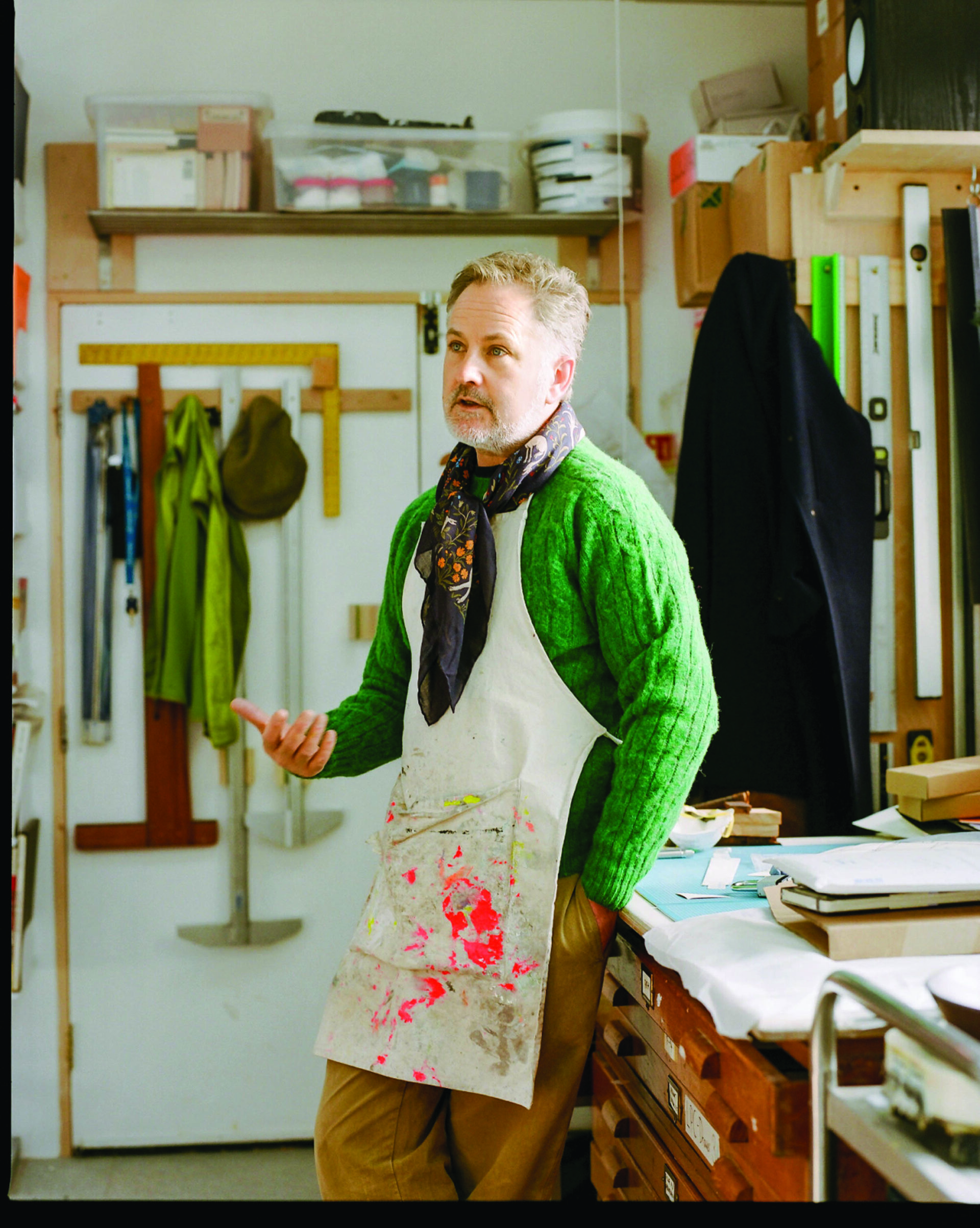Andrew Bick, a distinguished artist, curator, and academic, seamlessly bridges the realms of contemporary art, historical research, and cultural reinterpretation. Born in Coleford, Gloucestershire, in 1963, Bick holds the position of Professor of Contemporary Art and Reinterpretation at the University of Gloucestershire while maintaining a thriving artistic practice in London.
With works housed in renowned collections like The British Museum, Haus Konstruktiv Zurich, and Yale Center for British Art, Bick is celebrated for his explorations of geometry, systems, and the interplay of modernist legacies.
In an exclusive interview with The Sunday Guardian, Andrew Bick shares his reflections on contemporary art, the challenges of curation in a post-pandemic world, his mentorship of Indian artist Dr. Mandakini Devi, and his ongoing research on British Constructionist artists Anthony Hill, Jeffrey Steele, and Gillian Wise.
Excerpts
Q. Tell us about your association with the Indian artist Dr. Mandakini Devi. What are your thoughts on her work at large?
A. Well, I was Mandakini’s lead supervisor for her PhD at University of Gloucestershire, completed in 2018. Her recent solo exhibition Fractured and Lensicular was a clear development of the work she made with lightboxes and projected moving image installation for her PhD. Focusing on the hybridity of her work, between collage, painting and lens-based media, has also allowed Devi to simultaneously reconnect the archetypal ideas of Goddesses and Modernist legacies of India and the West, using image making techniques only possible through new technology. The result is a multi-layered approach to meaning; disruptive, feminist, serious and playful at the same time.
Q. What do you think separates Western art from the Oriental approach to art?
A. This question could take a long time to answer, but I think most of our differences are cultural, whereas aesthetics and responses to beauty are things we all share
Q. What are the challenges of making and curating art in a post-pandemic world?
A. Travel has become more constrained, and environmental considerations are part of this. However, Zoom and Teams calls have flourished as a result of the pandemic and combined with email, this allows for a more dynamic approach to longer term exhibition planning. You cannot beat meeting in real life however, and the exhibition as a medium is about exactly this direct encounter. In my experience of curating projects, the vitality of the material and spatial experience of an exhibition, and the ideas that art carries through its sensitivity to space and matter have become even more important than they were before we faced lockdown. The challenge is therefore to find new ways to make international exhibitions happen.
Q. How important is public art in today’s day and age?
A. The public gallery and art as a public conversation engages people across class, culture and expectation and is vital to making the world a healthier place. My go to analogy is that of planting of trees in public parks; creating good air, a sense of calm and a shady place to reflect on life is undeniably important. If exhibitions and/or art works in the public realm can offer some equivalence to a shady tree, then, like the great public monuments whose original purpose might not affect everyone but whose presence is undeniably beautiful, they need no further justification.
Q. Tell us about your upcoming works.
A. I am working on an artists’ book and exhibition based on a tapestry of mine that is developed from a Paul Klee tree study reproduced in a volume of his lecture notes titled The Nature of Nature. The answer to the previous question gives a clue as to how I am thinking, but the collaborative element will be with other artists, landscape architects and a series of gallery presentations of wall drawings and installations in Switzerland, the UK and possibly also India. Beyond this, I am also working on a new series of paintings in my studio.
Q. Also tell us about your long-term research around the work of Anthony Hill, Jeffrey Steele and Gillian Wise?
A. These three artists were key members of the British Constructionist and Systems groups from the 1950s to 1990s. They are all under known and undervalued and their use of geometry, mathematics and unusual metals and plastics to create architectonic imagery was unique and special. I have and will continue to write and curate championing their work, and it is an influence threaded into my own artwork as both Hill and a related artist, John Carter, taught me at BA and master’s level. My central questions have been around why their work remains under known, but also, as it forms a branch of late modernism, what remains vital about its contribution. What is interesting at this stage is how much the model of this research is applicable to other approaches, such as my collaborative work with Mandakini Devi, and how I never cease to find ways, particularly with Gillian Wise, to include the Constructionists and Systems Artists’ ideas and approaches to making in new projects.

